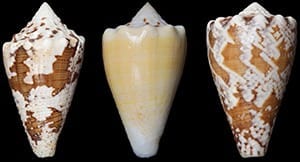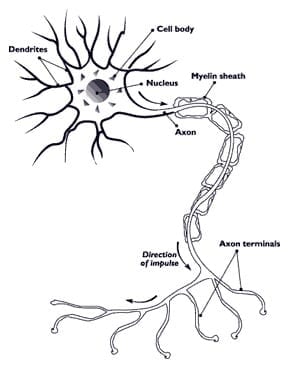
Using a tiny ball of ice, a minimally invasive interventional radiology treatment called cryoneurolysis safely short circuits chronic pain caused by nerve damage, according to data being presented at the Society of Interventional Radiology’s 38th Annual Scientific Meeting in New Orleans.
Highlights
- By freezing damaged nerves, minimally invasive cryoneurolysis can safely relieve the agonizing chronic pain caused by damaged nerves.
- Nerve-damaged patients said they experienced significant pain relief after treatment, in which a tiny ice ball froze the nerve, short circuiting pain signals sent to the brain.
- More than 15 million Americans suffer from chronic nerve pain, including people with diabetes and cancer.
- Interventional radiologists are physicians who specialize in minimally invasive targeted treatments.
“Cryoneurolysis could have big implications for the millions of people who suffer from neuralgia, which can be unbearable and is very difficult to treat,” said William Moore, M.D., medical director of radiology at Stony Brook University School of Medicine in Stony Brook, N.Y. “Cryoneurolysis offers these patients an innovative treatment option that provides significant lasting pain relief and allows them to take a lower dose of pain medication—or even skip drugs altogether,” added Moore, an interventional thoracic radiologist at Stony Brook.
More than 15 million Americans and Europeans suffer from neuralgia, in which nerves are damaged by diabetes, surgery or traumatic injury, Moore noted. Sufferers often rely on pain medications, which have side effects and may not provide enough relief. Cryoneurolysis uses a small probe that is cooled to minus 10 to minus 16 degrees Celsius, creating a freezer burn along the outer layer of the nerve. This interrupts the pain signal to the brain and blunts or eliminates the pain while allowing the damaged nerves to grow over time, explained Moore.
In the study, 20 patients received cryoneurolysis treatment for a variety of neuralgia syndromes and were evaluated using a visual pain scale questionnaire immediately
after treatment during one-week, one-month and three-month follow-ups after the initial procedure. Prior to treatment, patients’ pain plummeted from an average of 8 out of 10 on the pain scale to 2.4 one week after treatment. Pain relief was sustained for about two months after the procedure. Pain increased to an average of 4 out of 10 on the scale after six months due to nerve regeneration, Moore said. He recommends repeat cryoneurolysis treatments as needed per patient, however, some patients will receive up to a year of pain relief from a single treatment, he said.
The Latest Bing News on:
Chronic pain
- Chronic UTI and EDS patients fear losing PIP if benefits changeon May 7, 2024 at 10:00 pm
The Royal College of GPs said changes to PIP are 'highly concerning' for patients with conditions that take longer to diagnose ...
- Telehealth program created to improve access to specialty care found to reduce reliance on opioids in pain managementon May 7, 2024 at 2:07 pm
More Americans suffer from chronic pain than diabetes, heart disease, and cancer combined. Yet, a shortage of pain medicine specialists persists, causing many pain sufferers to seek care in primary ...
- 'I've lived with chronic pain for years but one diet has changed everything'on May 7, 2024 at 9:05 am
Sophie Richards was diagnosed with endometriosis several years ago and has tried everything to manage her symptoms ...
- Chronic Pain Help At Rosedale Acupuncture & Wellnesson May 7, 2024 at 8:17 am
Do you have long-term, chronic pain…maybe you feel older than you are? Dr. Lucas Brown, DAOM, LAc with Rosedale Acupuncture and Wellness spoke with Studio 512 about offering help to people who are ...
- Woman who suffers with chronic pain wants to challenge the stigma that comes with having chronic pain at a young ageon May 7, 2024 at 7:13 am
Abigail Stone has suffered with chronic pain for six years. She wants to reframe the profile of what people perceive chronic pain sufferers to be.
- Childhood chronic pain: ‘There’s a self-hatred that stems from chronic pain and illness, as much as I know it’s not my fault’on May 6, 2024 at 5:30 pm
How can adolescents fit in with their peers — who are typically heading to nightclubs after college lectures, crashing on couches when the party wraps up and balancing weekend work in a pub — when ...
- Artificial Intelligence, Psychedelics, and Psychotherapy Working Together to Fight Chronic Painon May 6, 2024 at 4:45 pm
Western medicine has long treated chronic pain by focusing only on pain receptors; two Dallas scientists are working to rewrite this approach.
- Best Tools For Managing Chronic Painon May 2, 2024 at 5:18 am
In 2019, more than 20% of U.S. adults experienced pain almost daily for three consecutive months, according to the Centers for Disease Control and Prevention (CDC) [1] Summary Health Statistics.
- A Predictive Healthcare Visionary Is Optimistic About Solving America’s Opioid Addiction And Chronic Pain Epidemicon April 26, 2024 at 2:20 pm
Studies found that Chronic pain is more prevalent and costly than cancer, diabetes, and heart disease combined, and its rates are rising even as other chronic ...
- Scientists Make Breakthrough in Chronic Pain Treatmenton April 26, 2024 at 7:53 am
Scientists have developed tiny robotic nerve "cuffs" to diagnose and treat neurological disorders. The flexible devices offer a safer, minimally invasive alternative to today's diagnostics and could ...
The Latest Google Headlines on:
Chronic pain
[google_news title=”” keyword=”chronic pain” num_posts=”10″ blurb_length=”0″ show_thumb=”left”] [/vc_column_text]The Latest Bing News on:
Cryoneurolysis
- Feed has no items.
The Latest Google Headlines on:
Cryoneurolysis
[google_news title=”” keyword=”cryoneurolysis” num_posts=”10″ blurb_length=”0″ show_thumb=”left”]










